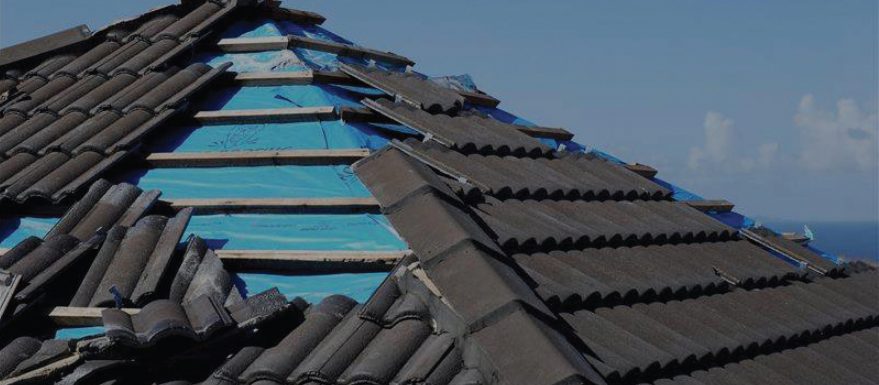How resilient is your Strata Title Property?

When it comes to North Queenslanders, we’re pretty tough. But when it comes to your strata title property, is it tough enough to withstand a cyclone? Here, we look at a new, free inspection program available to residential strata title properties within 100km of the Queensland coast.
What is the NQ Strata Title Inspection Program?
The North Queensland Strata Title Inspection Program is a three-year, $12.5 million program developed for the people of the north. It’s free, voluntary and gives residential strata title property owners a better understanding of the resilience or vulnerable of their property to future cyclone damage.
What do we mean by ‘resilience’ in the context of this program?
We mean the strength or robustness of a property, i.e. the extent to which the property can remain functional and mostly undamaged during and after a cyclone. The objective of the program is to provide guidance to strata owners in understanding the resilience of their properties along with some improvement ideas for consideration in future maintenance plans. It isn’t a silver bullet, but it can be a big step in the right direction – and it’s free.
The program is an engineering-based non-invasive inspection and assessment, based on JCU’s cyclone testing station’s 40 years of damage assessment. It is funded by the Federal Government, administered by the Queensland Government, and independently developed and deployed by James Cook University.
“Since launching in March, the scheme has seen uptake in Cairns and the Airlie Beach and Cannonvale areas – all of which have suffered severe recent cyclone damage.”
Where is this free program offered?
Inspections are offered free of charge for strata title properties in North Queensland within 100 km of the coast, down to the southernmost boundary of the Rockhampton Regional council area. It extends to the Queensland/Northern Territory border, and includes islands off the Queensland coast.
The Program commenced in March, with initial uptake in Cairns and the Airlie Beach and Cannonvale areas – all of which have suffered recent cyclone damage.
How do you test the resilience of a residential Strata Title Property?
The North Queensland Strata Title Program draws on the expertise of the Cyclone Testing Station at JCU and over 40 years of research and investigation into the effects of severe weather on structures. That experience has been used to develop a computer based tool that takes approximately 80 attributes of a building and estimates the resilience across a number of categories – wind, rain, storm tide, building auxiliaries and grounds.
- Wind resilience refers to how well the components of a building can resist wind loads and impacts from wind-borne debris and remain mostly undamaged during a cyclone. Elements assessed for wind resilience include roof and wall cladding, flashings and gutters, windows, doors and garage doors. Failure of roof or wall cladding or any elements that support the cladding often also allow rainwater to enter the building, which increases the level of damage.
- Rain resilience refers to how well the building can continue to function if water gets in or alternatively how well building elements can prevent wind driven rain entering. Wind-driven rain entering buildings can damage ceilings and wall linings, floors and building contents. A building that sustains water damage may require expensive repairs even though in some cases there may be little or no structural damage.
- Surge resilience refers to how well a building or complex can withstand inundation from storm water and/or seawater, and the forces generated by rising seawater and pounding waves that can occur during cyclones.
- Resilience of building ancillary items refers to the resilience of items that are attached to buildings e.g. solar photovoltaic panels, solar hot water systems, air conditioning units, signs, and aerials. Damaged ancillary items must be repaired or replaced and can also cause damage to the building as they detach, or they can become wind-borne debris that can break windows, doors or roof and wall cladding. Resilient ancillary items will remain undamaged during cyclones.
- Grounds resilience refers to the ability of different structures or items on the property such as large trees, sheds, fences, playground equipment and the like (but not the main building/s), to withstand the wind and storm tide forces generated during a cyclone. Wind-blown vegetation or storm tide inundation can also affect some property elements.
Buildings that are resilient will require minimal repairs compared with average buildings.
Is my property eligible?
Strata title properties are those such as units, townhouses, or houses connected by common areas such as driveways or gardens. Your property does not need to be under body corporate management.
Will getting my property assessed leave me vulnerable to insurers?
The voluntary inspection report is the property of the body corporate owners and the program follows strict data management guidelines in this regards. We do not share your personal information, report or recommendations with anyone. This is an independent assessment to assist strata title property owners in identifying potential vulnerablities with their property. It is a decision for the body corporate owners who they share the report with.
How do I register?
Registrations close April 2021. To sign up a property for the program, please register at stp.hpc.jcu.edu.au






